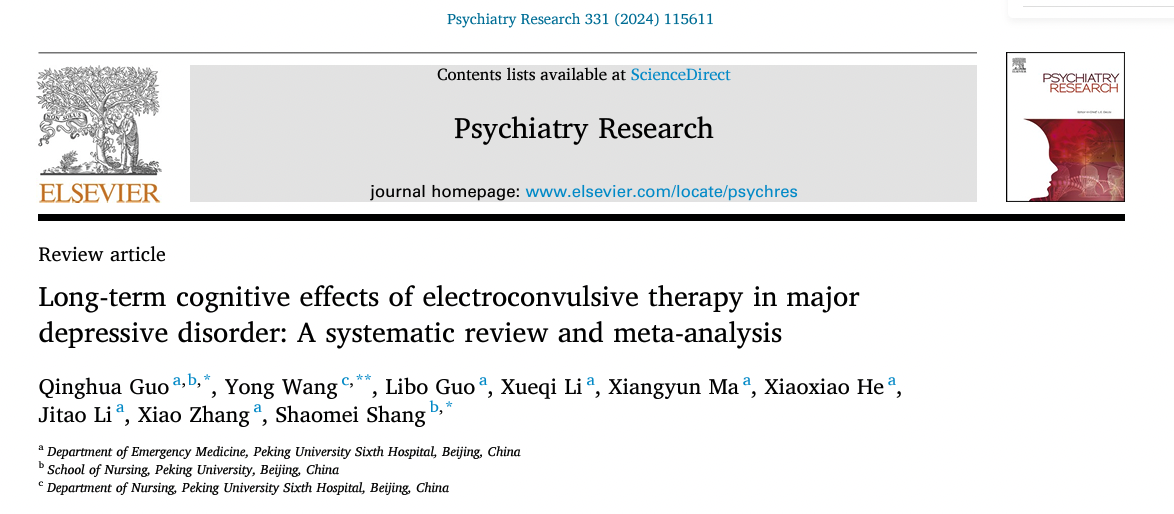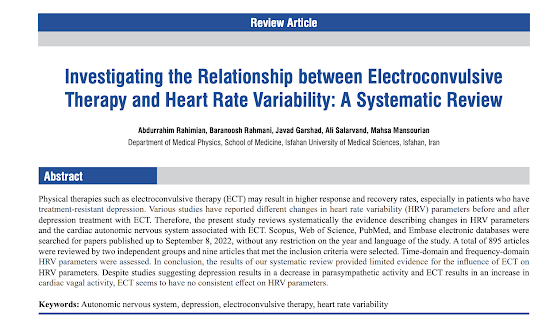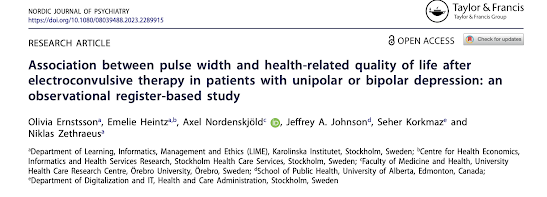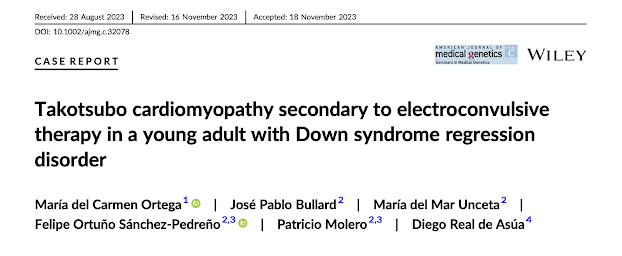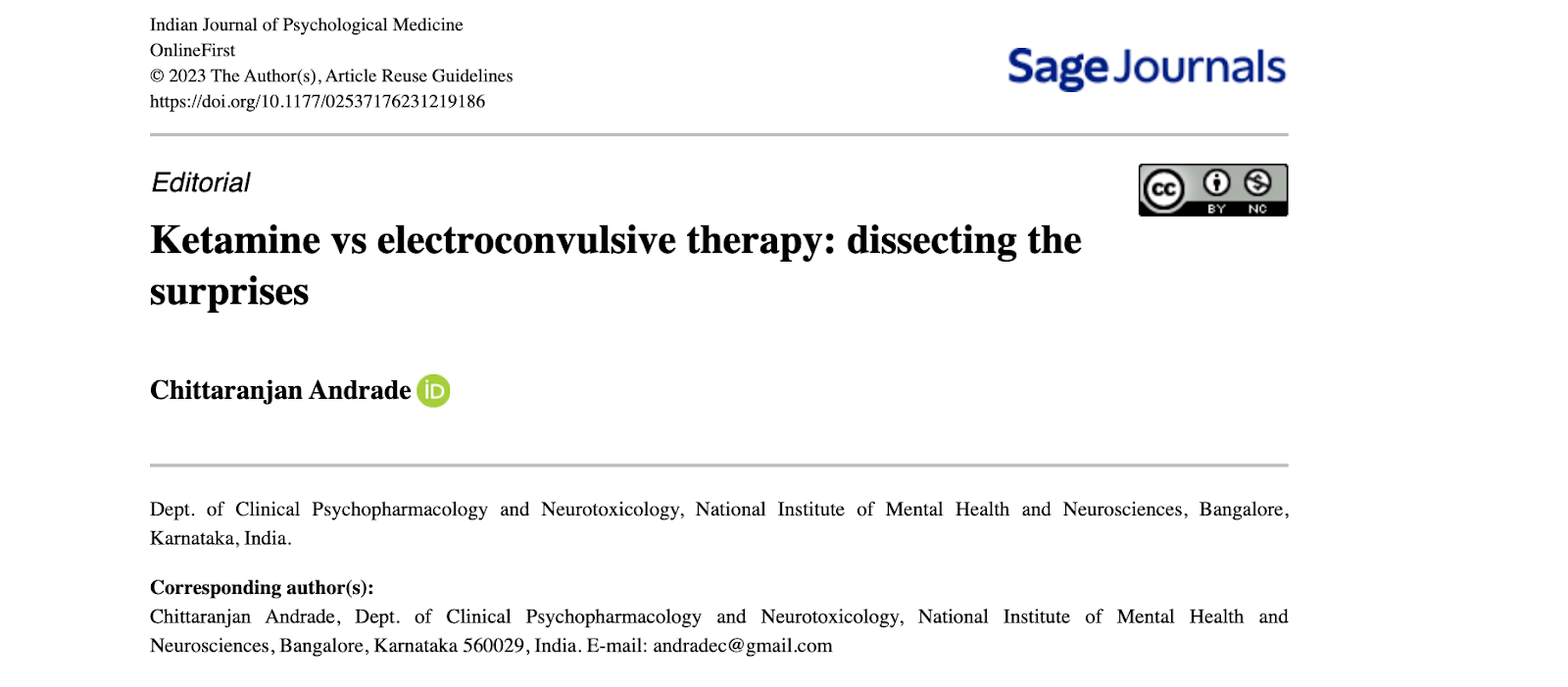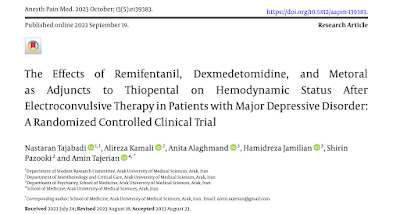Out on PubMed, from authors in China, is this review: Long-term cognitive effects of electroconvulsive therapy in major depressive disorder: A systematic review and meta-analysis. Guo Q, Wang Y, Guo L, Li X, Ma X, He X, Li J, Zhang X, Shang S. Psychiatry Res. 2023 Dec 1;331:115611. doi: 10.1016/j.psychres.2023.115611. Online ahead of print. PMID: 38101070 Review. The abstract is copied below: Objective: Electroconvulsive therapy (ECT) is endorsed as a principal treatment approach for major depressive disorder (MDD) worldwide. Despite prior studies highlighting potential short-term cognitive deficits post-ECT, the debate regarding its long-term implications persists. This study endeavors to elucidate the reasons for this contention using an evidence-based approach. Methods: This investigation, meticulously aligned with PRISMA guidelines, was prospectively enlisted on PROSPERO (CRD42023439259). A comprehensive search was performed across various databases, including PubMed, Cochrane
